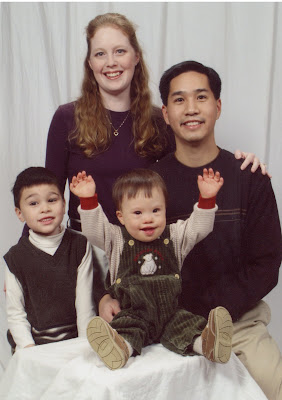People talk about suburban, urban, rural, and exurb. What are we to understand about these words and where we may live in our own communities?
Suburbs used to be easily identified as the rings of communities surrounding established central cities, but it’s not quite that simple anymore. Today, the newest forms of suburbia, also known as exurbs or edge cities, are themselves becoming the new centers of industry and commerce and stand geographically distanced from metropolitan centers. Whereas suburbs used to be dependent on the central cities, now more people live, work, shop and worship in suburbia than in central cities. Suburbia may well be one of the most significant mission fields of the 21st century.
Is it harder to live for the church in suburbia?
Every environment, whether urban or rural, medieval or modern, has always had its own particular challenges to Christian faith and practice. But God needs Christians to be present everywhere, and the answer is not to abandon the suburbs, but to redeem them. The more common reality is that many, perhaps most, suburban Christians simply live in suburbia and uncritically absorb suburban trappings and worldviews. That’s why it’s all the more important for Christians to be intentionally strategic and missional about living Christianly in the suburbs.
How has suburbia changed the church? Is the church making any impact on suburbia?
Many suburban churches have worked hard to contextualize their ministries to a suburban context, just as any missiologist would work to translate the gospel into the language and forms of a particular culture. As a result, some of the most vibrant and thriving suburban churches have intentionally contextualized their buildings and ministries to resemble suburban architecture and institutions, from community colleges to shopping malls. A danger of this is that some forms of suburban Christianity merely mirror suburbia’s commercial, consumerist environment and are not distinctively countercultural enough. What some churches call contextualization, others might call compromise.
How can church leaders reading your book understand their constituency better and thereby minister better?
I hope suburban church leaders have a better understanding of the societal and sociological forces of suburbia that shape suburban life. Yes, suburbia tends to be fragmented and anonymous, community is difficult to develop, and so on. But how did we get here? Suburbia tends to be a place of consumption, not production. It’s a commuter culture, it’s a material world. It’s also a place where we can cultivate and practice classical spiritual disciplines of community, hospitality, generosity and simplicity.
You write about the public “third places,” a concept of sociologist Ray Oldenburg, and that work and home are the first two. In what way does the church fill the third place?
One of the ironies of suburbia is that it’s filled with people, but it’s very difficult to connect and build relationships. Which is why coffeehouses have expanded so much in suburbia over the last 15 years or so. They’re a commercial substitute for what used to be the public square, the community gathering places for people to meet and connect. But if anything should fill that need for the third place, it’s the church! Churches can become civic gathering places that are open to their communities. You don’t need food courts or espresso bars, just places that community groups and functions can meet.
Any cautions or hopes that you have for the church in suburbia?
My main caution — don’t contextualize so much that the church becomes just another consumer lifestyle choice alongside the shopping mall and the health club. Be an intentional community that heralds the presence of the kingdom of God, that seeks the welfare of the suburbs. And my main hope for the suburban church is that it would be a center of ministry and mission both to and from the suburbs, that suburban churches would minister effectively to their local suburbs, loving suburban people, and also looking beyond suburbia to give generously of their resources in partnership with the urban and global church as well.


2 comments:
We are using Suburban Christian as our current small group study here in the suburbs of Atlanta (we are diving into chapters 1 and 2 this week). The group is made up of the adult leadership in the youth department of our church. Anything you would like us to pass along specifically to us or the high school students?
If you look in the index under "youth ministry," you'll find a few sections and suggestions specifically relating to suburban teens and youth groups. Also, Youthworker Journal will be running an interview article with me in an upcoming issue, I think. Here's something I told them, in response to a question about suburban notions of "the good life":
To oversimplify things, suburbia tends to be a material world. So suburbanites tend to define “the good life” in material terms, with all the requisite brand-name markers of clothing, possessions, technology and the like. Or we define “the good life” as “the achieving life,” or “the popular life,” or “the busy life.” Youthworkers can challenge these suburban visions first by simply naming them and exposing them for what they are. And then they can hold up, live out and embody Christian alternatives: for example, the truly good life is a generous life that gives away rather than acquires for one’s self. The truly good life is a contemplative life that is reflective and not just active or busy, or a life of service that is focused on ministry to others.
Post a Comment